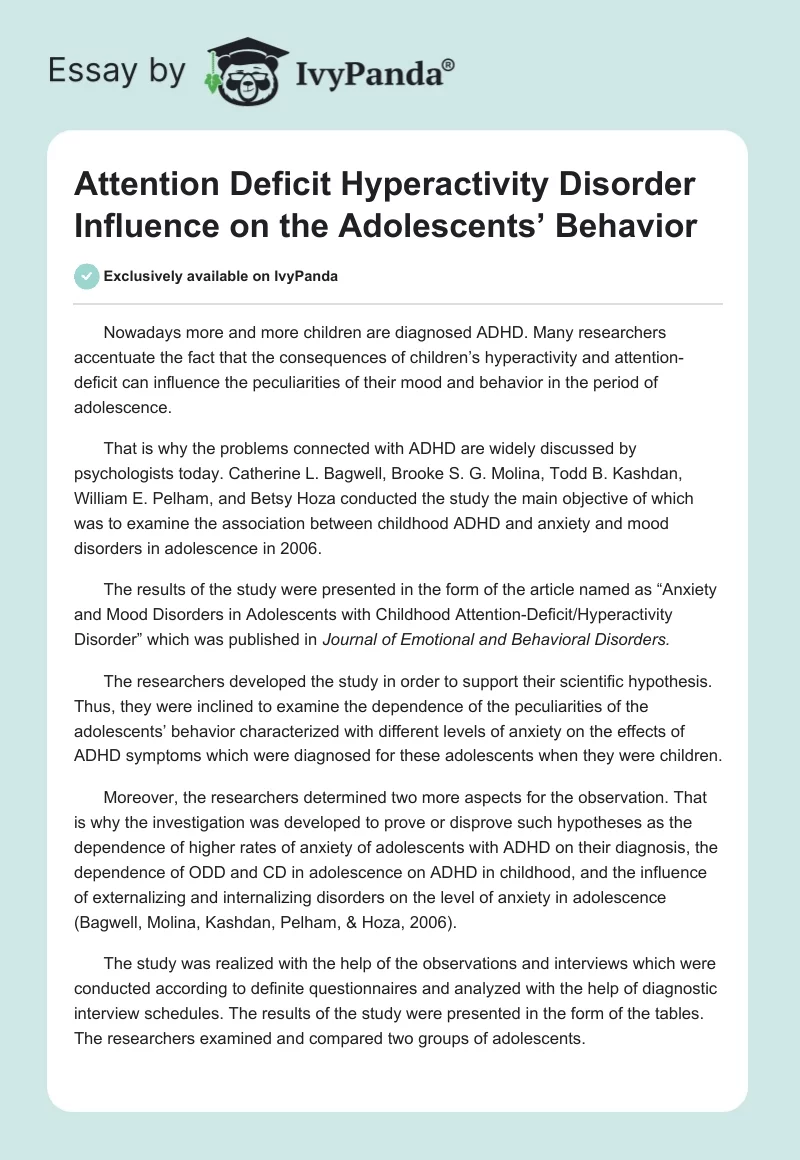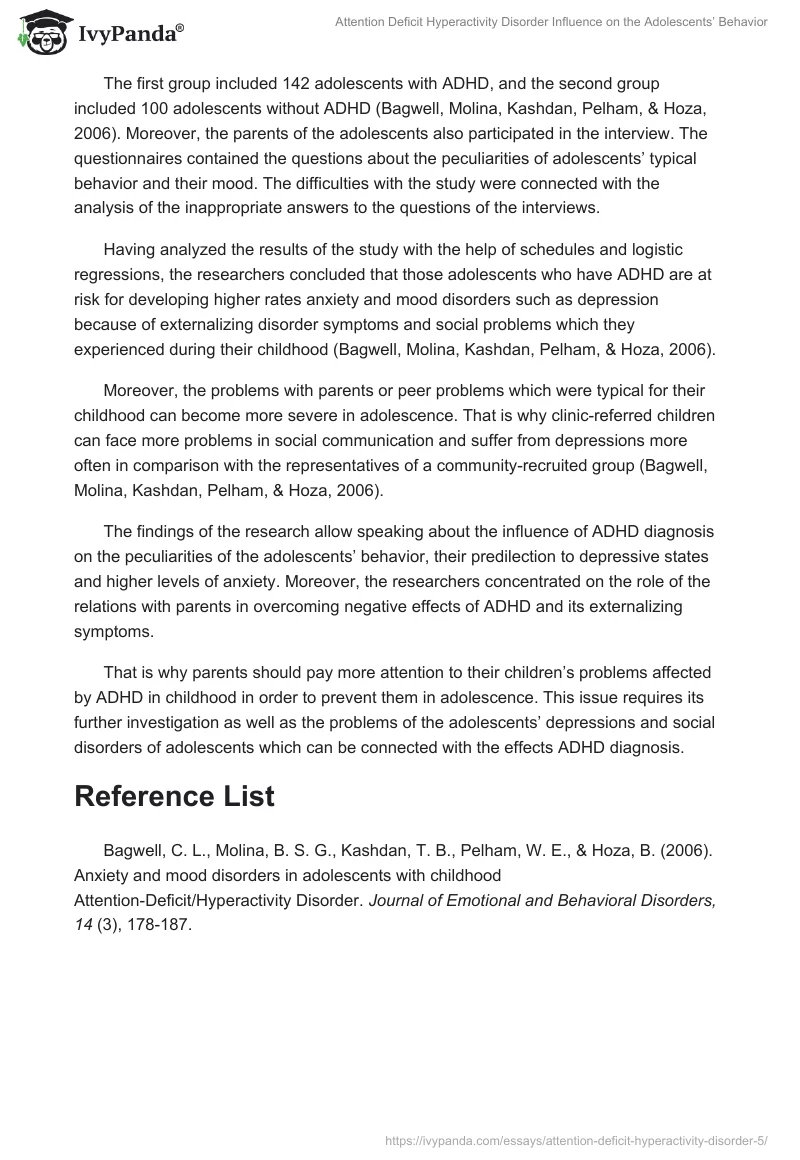Nowadays more and more children are diagnosed ADHD. Many researchers accentuate the fact that the consequences of children’s hyperactivity and attention-deficit can influence the peculiarities of their mood and behavior in the period of adolescence.
That is why the problems connected with ADHD are widely discussed by psychologists today. Catherine L. Bagwell, Brooke S. G. Molina, Todd B. Kashdan, William E. Pelham, and Betsy Hoza conducted the study the main objective of which was to examine the association between childhood ADHD and anxiety and mood disorders in adolescence in 2006.
The results of the study were presented in the form of the article named as “Anxiety and Mood Disorders in Adolescents with Childhood Attention-Deficit/Hyperactivity Disorder” which was published in Journal of Emotional and Behavioral Disorders.
The researchers developed the study in order to support their scientific hypothesis. Thus, they were inclined to examine the dependence of the peculiarities of the adolescents’ behavior characterized with different levels of anxiety on the effects of ADHD symptoms which were diagnosed for these adolescents when they were children.
Moreover, the researchers determined two more aspects for the observation. That is why the investigation was developed to prove or disprove such hypotheses as the dependence of higher rates of anxiety of adolescents with ADHD on their diagnosis, the dependence of ODD and CD in adolescence on ADHD in childhood, and the influence of externalizing and internalizing disorders on the level of anxiety in adolescence (Bagwell, Molina, Kashdan, Pelham, & Hoza, 2006).
The study was realized with the help of the observations and interviews which were conducted according to definite questionnaires and analyzed with the help of diagnostic interview schedules. The results of the study were presented in the form of the tables. The researchers examined and compared two groups of adolescents.
The first group included 142 adolescents with ADHD, and the second group included 100 adolescents without ADHD (Bagwell, Molina, Kashdan, Pelham, & Hoza, 2006). Moreover, the parents of the adolescents also participated in the interview. The questionnaires contained the questions about the peculiarities of adolescents’ typical behavior and their mood. The difficulties with the study were connected with the analysis of the inappropriate answers to the questions of the interviews.
Having analyzed the results of the study with the help of schedules and logistic regressions, the researchers concluded that those adolescents who have ADHD are at risk for developing higher rates anxiety and mood disorders such as depression because of externalizing disorder symptoms and social problems which they experienced during their childhood (Bagwell, Molina, Kashdan, Pelham, & Hoza, 2006).
Moreover, the problems with parents or peer problems which were typical for their childhood can become more severe in adolescence. That is why clinic-referred children can face more problems in social communication and suffer from depressions more often in comparison with the representatives of a community-recruited group (Bagwell, Molina, Kashdan, Pelham, & Hoza, 2006).
The findings of the research allow speaking about the influence of ADHD diagnosis on the peculiarities of the adolescents’ behavior, their predilection to depressive states and higher levels of anxiety. Moreover, the researchers concentrated on the role of the relations with parents in overcoming negative effects of ADHD and its externalizing symptoms.
That is why parents should pay more attention to their children’s problems affected by ADHD in childhood in order to prevent them in adolescence. This issue requires its further investigation as well as the problems of the adolescents’ depressions and social disorders of adolescents which can be connected with the effects ADHD diagnosis.
Reference List
Bagwell, C. L., Molina, B. S. G., Kashdan, T. B., Pelham, W. E., & Hoza, B. (2006). Anxiety and mood disorders in adolescents with childhood Attention-Deficit/Hyperactivity Disorder. Journal of Emotional and Behavioral Disorders, 14 (3), 178-187.


